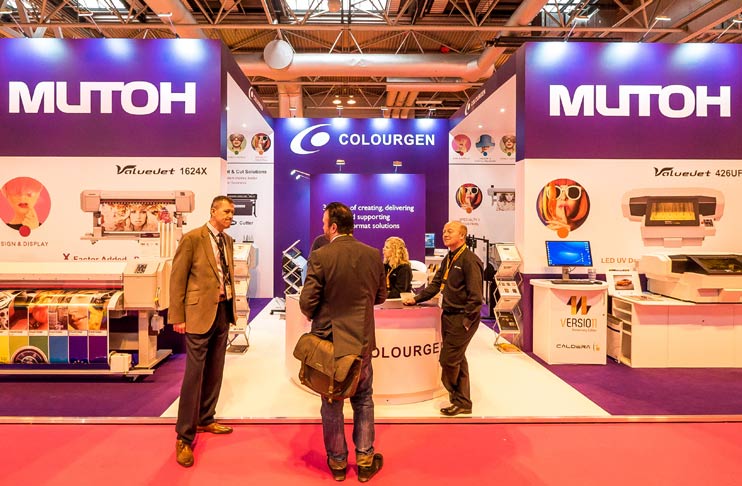Mutoh, after obtaining a successful boom in important markets including Turkey, informs that there is a trend in the market in LED UV and digital textile printing areas.
One of the most important brands of digital printing sector, Japan centered Mutoh has a large product portfolio. The company offers wide format piezo drop on demand inkjet printers and sign cutting plotters for sign and display, specialty/industrial, digital transfer, direct textile & direct to garment applications to the market.

Mutoh Belgium Head of Trade Marketing Nick Decock says Mutoh is experiencing a stable situation, although in some countries the digital textile printer market had a slower period during the first months of 2017. Decock continues; “we recently witnessed a high interest in our latest volume oriented digital textile printers and dye sub printers, more specifically in countries like Turkey. These new printer models fulfil the adapted market requirements for reliable digital print solutions offering top print quality at a high / more industrial volume production speed. These new models are also particularly interesting for installed base Mutoh printer users looking for higher speeds and higher productivity.”
Underlining the market segment of LED UV printers and dye sub / direct textile printers has attracted a large demand recently, Decock describes Mutoh’s production strength; “Mutoh is a manufacturer of wide format digital piezo inkjet printers for direct to textile and dye sublimation applications up to a width of 2.6 metres.” The digital textile print sector is a growing business encloses Decock; “digital printing has now reached a good level of maturity with regards to technology, quality and print speeds, factors which have proven to be acceptable for traditional textile printers for their short run needs.”
Two new Mutoh product has been launched
Nick Decock says Mutoh printers made in Japan appeal specifically to businesses looking for digital equipment offering high reliability and good print quality in combination with an attractive volume production speed. Speed not only in terms of print speed, but also the integration of comfort features to easily handling pre-printed media for an after-treatment process to finish the print jobs according to Decock.
Latest newcomers to the Mutoh family of solutions are the ValueJet 1948WX and the ValueJet 1938TX, Decock describes them as; “the ValueJet 1948WX, a four head 1900 mm wide dye sublimation printer offering speeds up to 194 m²/h, and the ValueJet 1938TX, a 1900 mm direct to textile printer with integrated gutter. The VJ-1938TX allows direct printers on open one way stretch fabrics. Integrated gutter system for open textiles. Head height up to 6 mm to accommodate a wide range of fabrics”
Nick Decock states that analogue solutions are being replaced by digital solutions in the global market, the advantage brought by digital technologies influence the market as a whole he says. Decock about the digital transformation and its advantages;
Mutoh Digital solutions replaces analogue solutions
“Beside the current market trend towards direct printing onto natural fibres like cotton using water based pigmented inks, we clearly see a shift from centralized production and stocking of digital prints made with analogue equipment towards local and on-demand production of digitally printed textiles, specifically linked to the key benefits of digital inkjet technology. Online sales, customisation, personalisation and creativity are driving the textile market.
Taking this into account digital dye sub/direct textile printers offer a number of unique advantages over conventional analogue printing; possibility to produce plateless multiple products even at low volume, endless full colour design possibilities, quick and local delivery meaning production plants rather decentralize their production and work without stock, lower production cost versus analogue technologies. No setup cost, even for one-offs, high added value: huge opportunities for personalization and variable data production vs. mass production, environmentally friendly – there is no need to clean plates after printing.”


